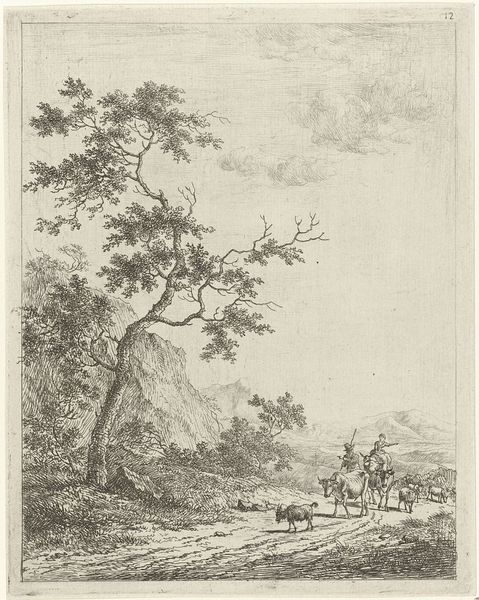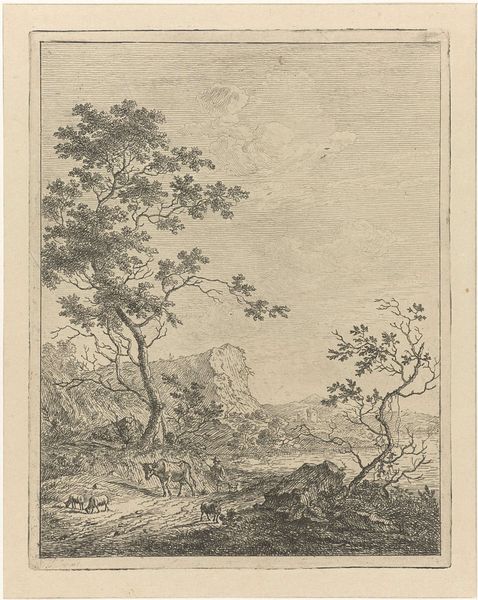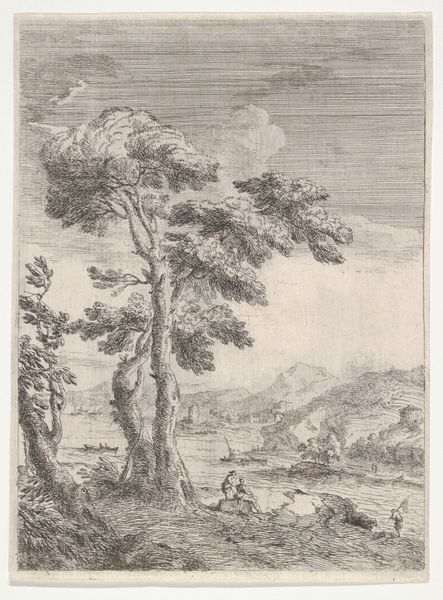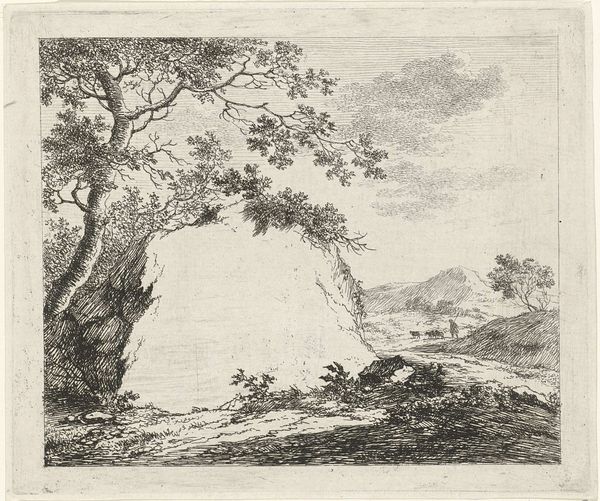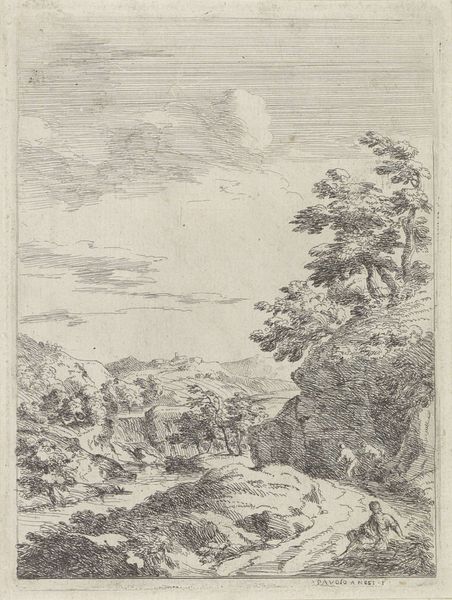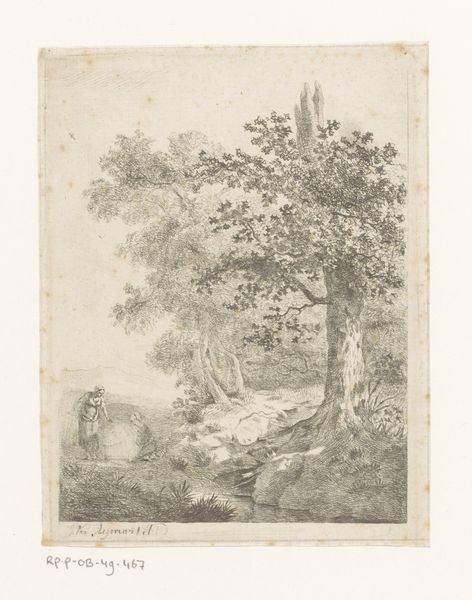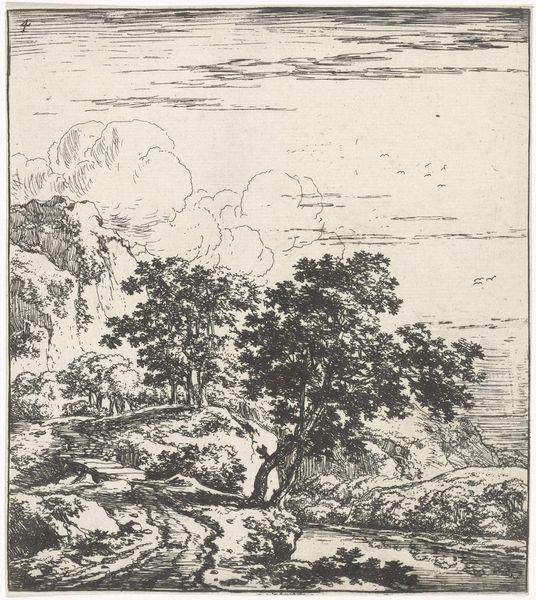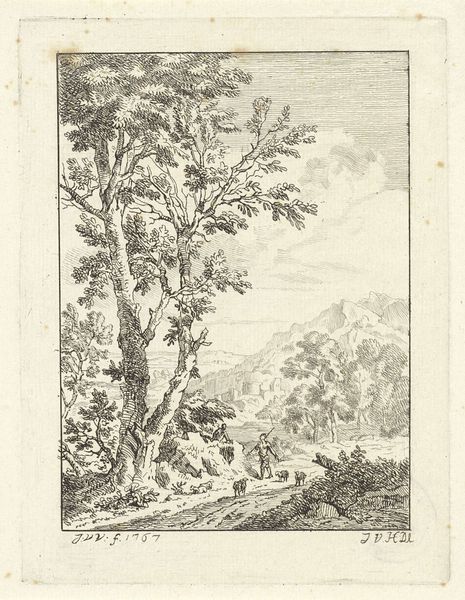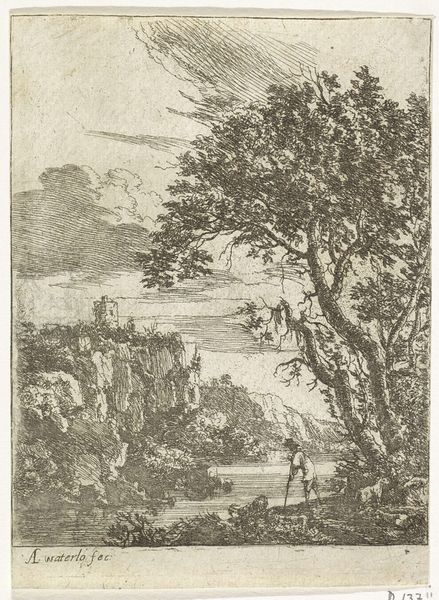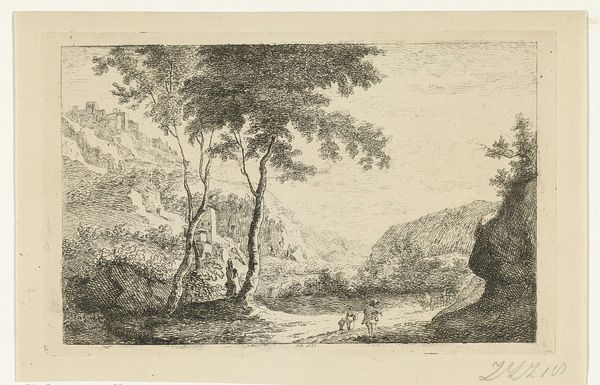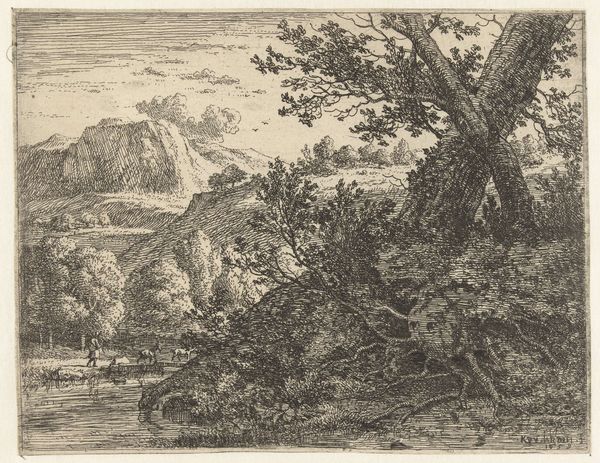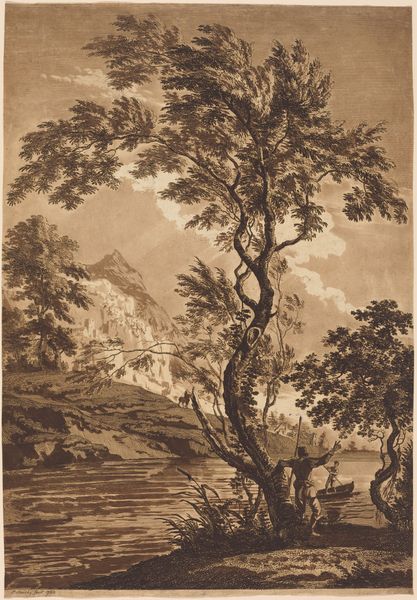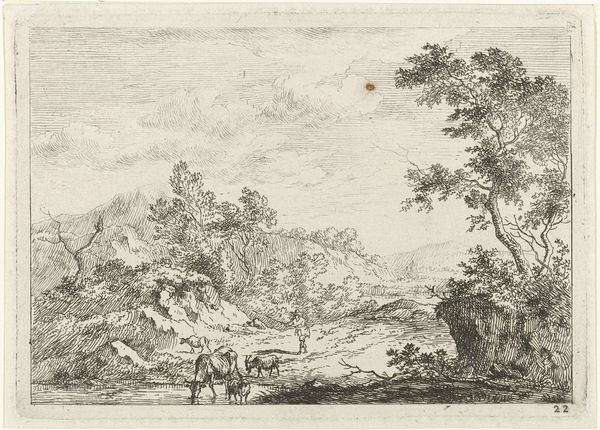
Dimensions: height 210 mm, width 165 mm
Copyright: Rijks Museum: Open Domain
Johannes Janson created this landscape etching, featuring a shepherd and cattle, sometime in the 1700s. The magic of an etching lies in its making. First, Janson would have covered a copper plate with a waxy, acid-resistant layer. Then, using a sharp needle, he’d carefully scratch his design into the wax, exposing the metal beneath. The plate was then immersed in acid, which bit into the exposed lines, creating grooves. After removing the wax, ink was applied to the plate, filling these grooves. The surface was wiped clean, and finally, damp paper was pressed against the plate, drawing the ink out of the grooves and creating a mirror image of the design. Consider the labor involved in each print, and that many copies could be pulled from the same plate. It’s a fascinating blend of craft and nascent industrial production, making art more accessible to a wider audience. It invites us to consider how the artistic process itself carries social and cultural meaning.
Comments
No comments
Be the first to comment and join the conversation on the ultimate creative platform.
